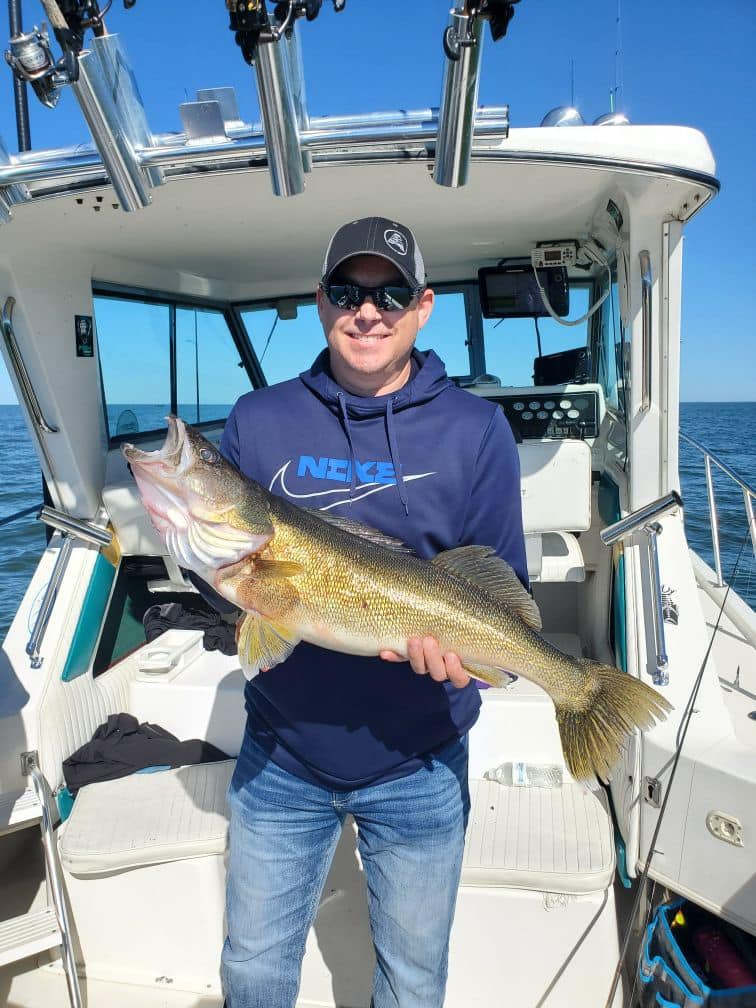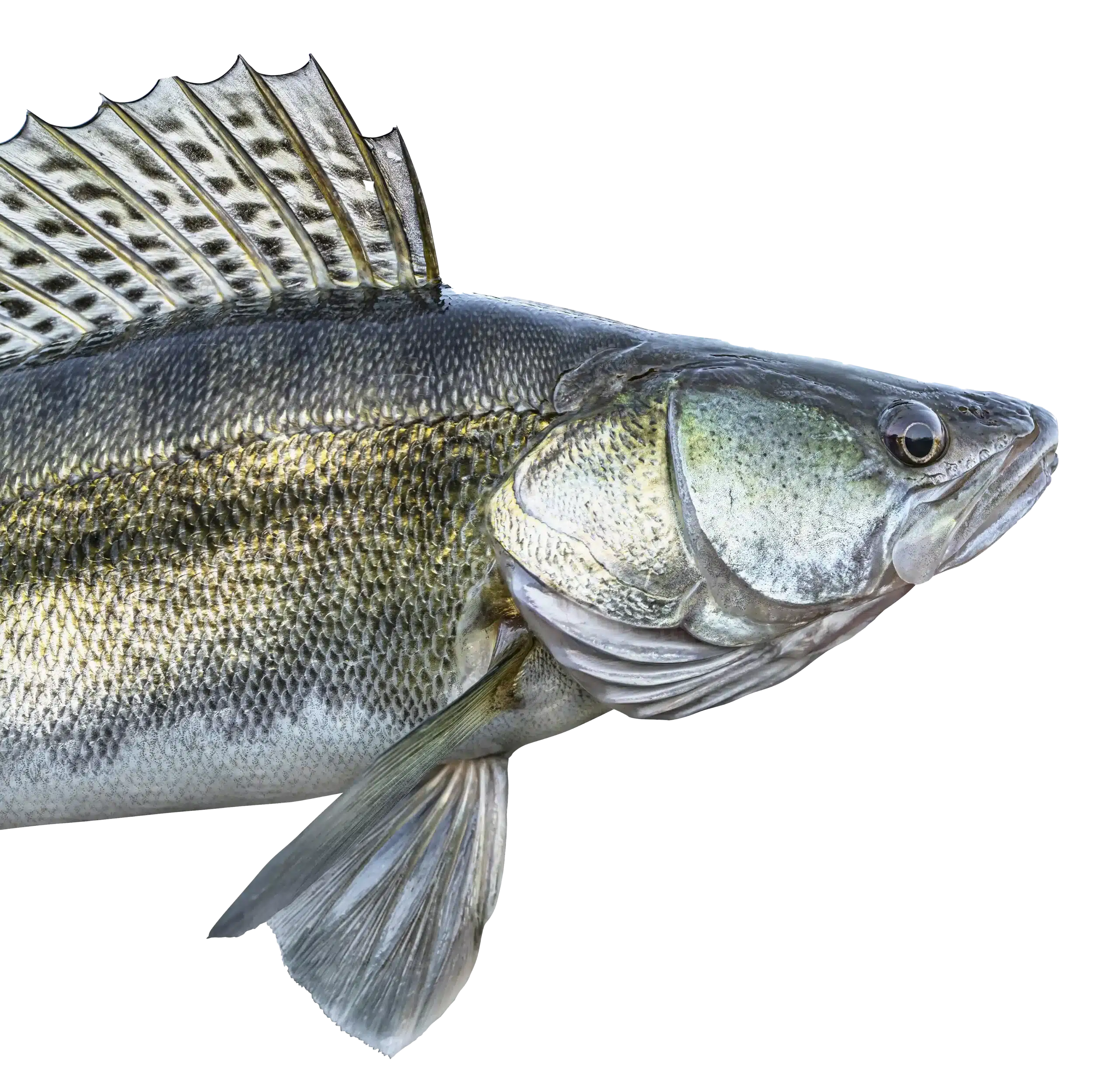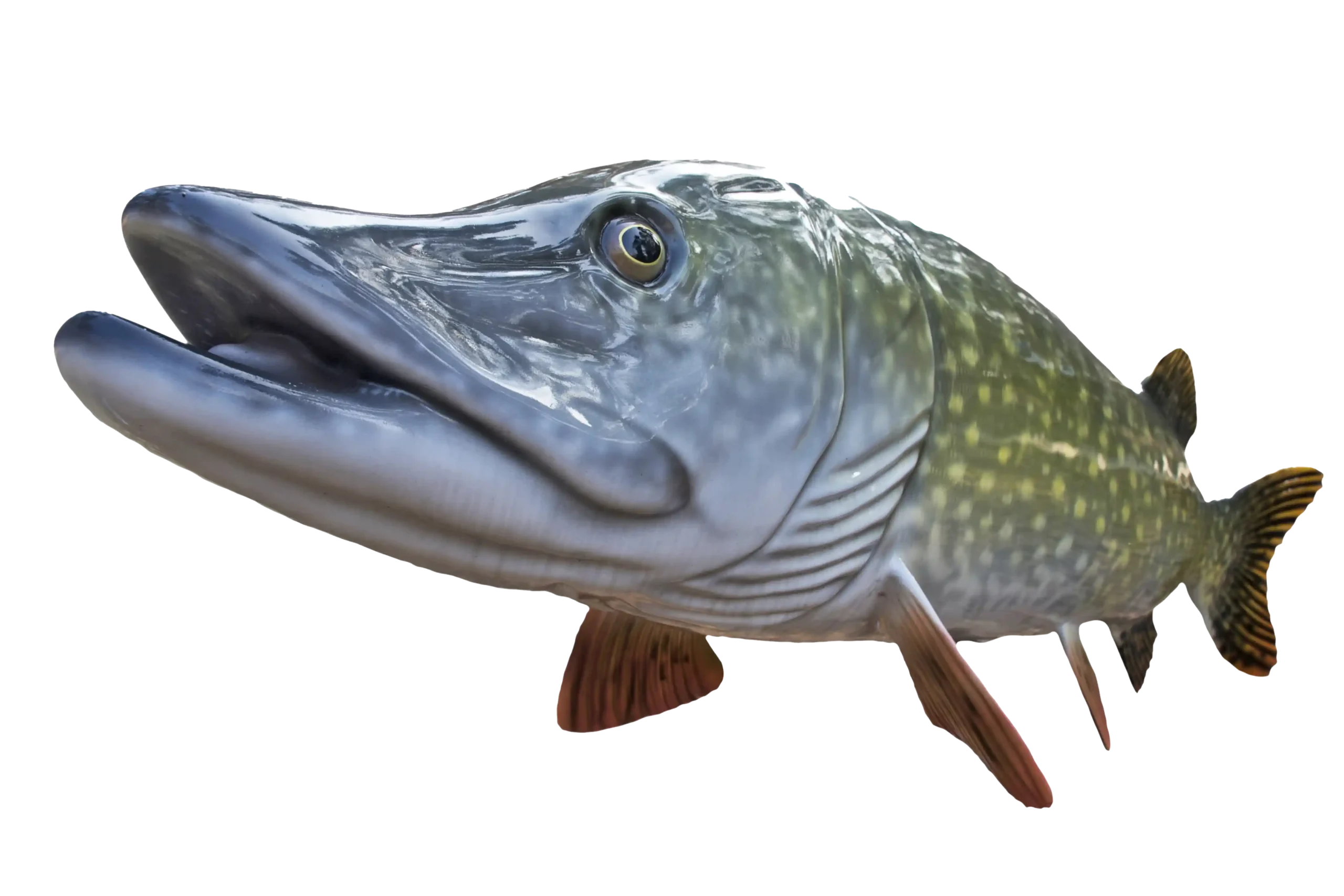LIMITS & SPECIES IN
LAKE OF THE WOODS
Go to MN DNR Fishing Regulations page for full current limits.
WALLEYE
The limits for Walleyes and saugers change a few times through-out the year. The limits are listed below with dates and locations at certain times of the year.
Walleye and Sauger Lake of the Woods
- (MN Fishing Opener – April 14)
- The Walleye/Sauger aggregate limit is six (no more than four can be Walleye). Walleye from 19.5 through 28 inches must be immediately released.
- Only one Walleye over 28 inches total length may be possessed.
There are many different habits of the walleye on Lake of the Woods. This may be due to the diversity of the enormous lake. There are many different types of structure and solids that make up the bottom surface, as well as many different ranges and variations of depth around the lake. This allows Lake of the Woods to be diverse in its ability to reproduce and sustain different species of fish and create many different but simultaneous patterns of activity on one body of water.
Some longtime LOW anglers would explain there are two different kinds of walleyes in Lake of the Woods, river walleyes and a lake walleyes. Although we know that a walleye can travel over long distances in its life span, there are some people that believe a portion of the walleyes never leave the lake or never leave the river.
Anglers are constantly trying to figure out walleyes. There are many different thoughts and ideas out there, but there are a couple things everyone can agree on. One is that you can find the walleyes when you find their food source. The second is gold is always a staple color for tackle on Lake of the Woods.
jig and frozen shiner 14Starting at fishing opener in mid-May the Walleye seem to be closer to shore and actively feeding on bait fish in the sandy areas. Jigging with a minnow is an effective presentation this time of year. Most anglers will find an area with walleyes and anchor up presenting live or frozen bait in 6-22 feet of water.
Into June walleyes are moving a little deeper. In addition to jigs, spinner rigs, generally a 30-40″ snelled spinner can be effectively drifted or slowly trolled. These snelled spinners are normally tipped with minnows, leeches, and crawlers. Bouncer with crawler harness Copy 640×424
It is usually toward the beginning of July that a large number of the walleyes are in the deeper water (30-36 feet). In addition to snelled spinners with live bait, this is a great time of year to work different types of crankbaits or minnow imitating lures that are typically trolled.
There are also many walleyes in the reef areas as the rocks tend to hold a cooler water temp. This can be great for drifting with the spinners or even trying some slip bobber fishing. There are many trophy sized fish caught at this time of year through August. Often this time of year the feeding pattern tends to be more leeches, freshwater shrimp, and bugs.
Greg Jones, Joe Henry, Rainy River WalleyesIn September & October the Rainy River and Four Mile Bay experience a shiner run. This shiner run generally lasts through the formation of ice. The walleyes follow the shiners into the Rainy River providing high walleye concentrations. If the shiners are running, this can be some of the best walleye action of the year with many limits being caught.
The ice fishing season runs from early December through March for walleye and saugers. On average resort fish houses are out around the 10th of December and are on the until the later part of March depending on weather conditions. It is best to always be communicating with your favorite resort or ice road operator for ice conditions in the area you plan on traveling. Safety first.Sunset lodge fish house, NW Angle, Lake of the Woods
Resorts usually start off in the shallower water, the sand bottom and number of bait fish in the area at this time of year can produce incredible action.
As the season progresses we move out deeper and deeper and the bottom becomes a mud structure. At times, resorts end up 15 miles north in 36 feet of water. In February, some resorts begin move some houses to some of the reef areas. This can be a test of timing and skills as you move to different depth and bottom structure to find the feeding area.
Resorts are a great resource. Whether it is open water or ice, they are skilled at providing great fishing opportunities for anglers of all ability levels. Check out www.LakeoftheWoodsMN.com/lodging for a list of resorts, hotels, guides, charters and fish house options.
SAUGER
LAKE STURGEON
Lake Sturgeon have rebounded in a big way on the Rainy River and in Lake of the Woods. There are good numbers of fish and a strong population of big fish.
Seasons on when you can catch and release sturgeon and keep sturgeon vary.
- Catch-and-release only: Oct. 1 -April 23
- Harvest season: April 24-May 7
- Catch-and-release only: May 8-15
- Closed: May 16-June 30
- Harvest season: July 1-Sept. 30
Anglers looking to catch and keep a sturgeon during the keep season must purchase a sturgeon tag. They are allowed 1 sturgeon per calendar year. Fish must be 45″-50″ inclusive or over 75″. Fish must be immediately tagged and registered within 48 hours. See the Sturgeon Fishing section.
See the “Canada-Minnesota” Border Waters section of the MN DNR fishing regulation booklet for more details about Lake Sturgeon fishing regulations.
For a more thorough listing of all regulations that apply to the Lake of the Woods area, please see the “Canada-Minnesota” Border Waters section Minnesota DNR Fishing Regulations.




